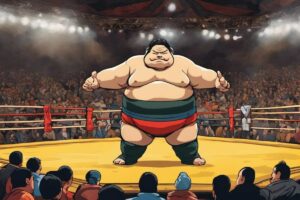Japanese dolls (ningyos in Japanese) are a much-celebrated part of Japanese culture.
The dolls are not just souvenirs or toys; they are displayed in homes, celebrated at festivals, represent certain ideologies or historical figures, and are given as gifts.
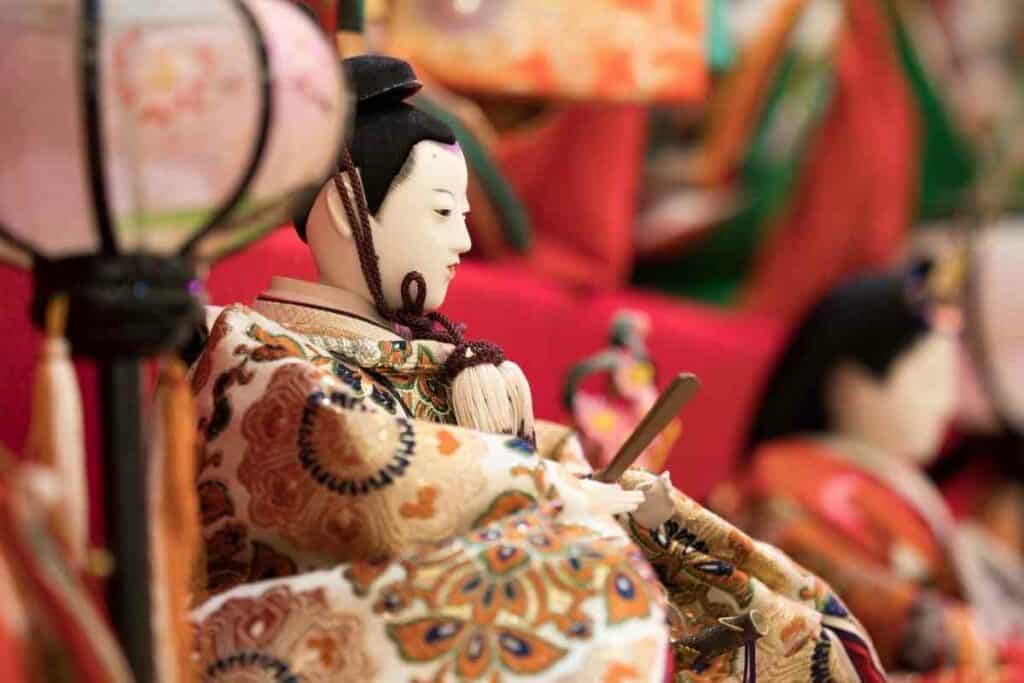
Japan’s nuanced and eclectic range of dolls deserves thorough exploration.
Here are 12 types of Japanese dolls that you should know.
Table of Contents
1. Hina Dolls
These ornamental dolls have a special purpose.
They are displayed on Hinamasuri, Japan’s Girls’ Day which is celebrated on 3rd March every year.
This is an important festival where people pray for their daughters’ future prospects and happy marriages for them.
There’s even a ritual where small Hina dolls are placed in a small stream which is said to guard young girls from bad spirits.
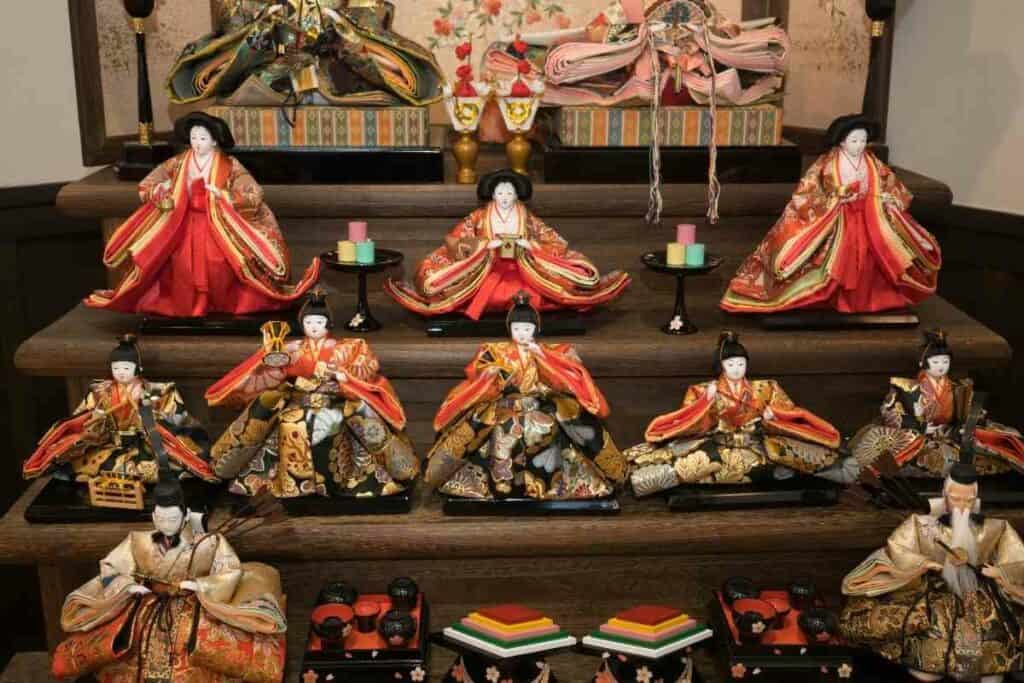
Dating back to the Heian period (794 – 1185 AD), the dolls wear outfits from the era.
The dolls are often displayed on a tiered platform that is covered in a red cloth.
They are placed in pairs, with the obina (the male doll) next to the mebina (the female doll). The pair is known as the odairisama or dairibina.
These are the Emperor and the Empress, and they are placed on the top tier of the platform.
There are typically six or seven levels with other figures of the aristocracy on the lower levels. Each layer of dolls has a different meaning.
Booking.comThere are the three servants (the San-nin Kanjo), sometimes known as the ‘clever maidens.’ They wait on the Emperor and Empress.
They each have a specific implement with them:
- a sake bottle
- a platter
- and a ladle
On the next tier are five young male musicians (Go-nin Bayashi) each playing a different instrument. Next, there are Sui-jin – two guardians.
One is a young guardian, and the other is older, with the elder often being a samurai. On the fifth tier down are three more servant dolls (Shi-cho) who perform chores. They often have brushes or dustpans as accessories.
And, because the number seven is said to be lucky, there are often two more layers and include things such as small items of doll-sized furniture or decorations.
Some of these dolls are awfully expensive, costing thousands of pounds. Often, families add to their Hina doll collection and display a little each year.
2. Daruma Dolls
Daruma dolls first appeared in the 17th century and are said to be a rather obscure depiction of Bodhidharma, a monk who was also referred to as Daruma-Daishi.
Bodhidharma is renowned for bringing Zen Buddhism into China.
The dolls were first made by farmers in Takasaki and were intended to be used as trinkets for monks to bless so that the farmers would have luck during the harvest season.
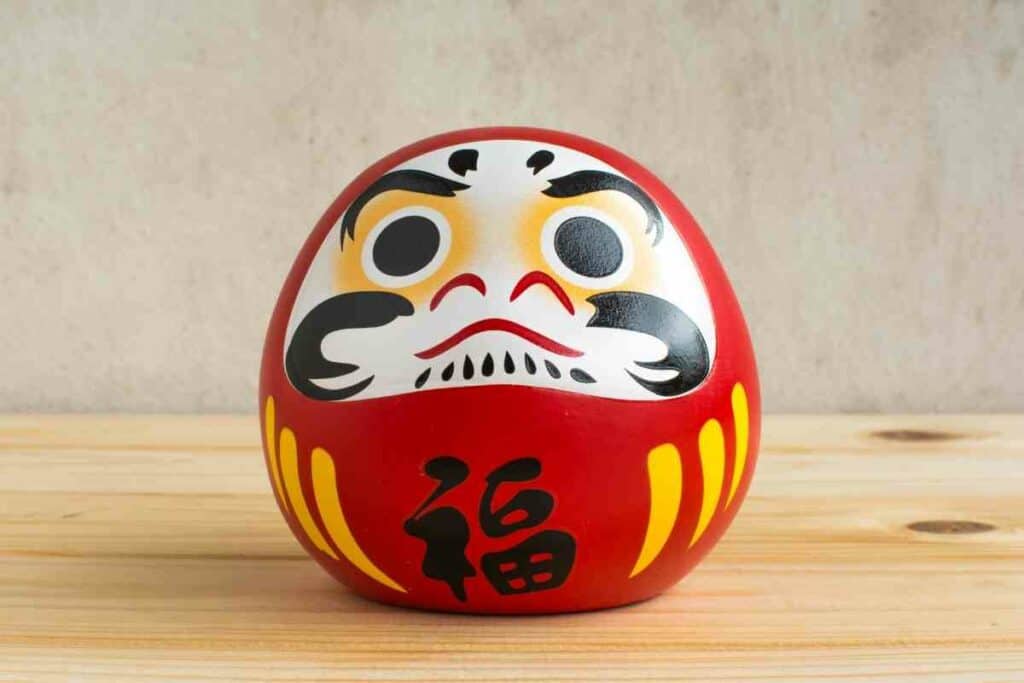
A few decades later, the dolls’ use became more widespread throughout most of Japan.
Nowadays, they are mostly bought around the time of the New Year.
Read later – 10 Best New Year Celebrations In Japan
These Japanese dolls are egg-shaped and rather portly with odd angry-looking faces.
Apparently – This is to remind the owner to persevere when faced with difficulties in the pursuit of an aim.
What’s more, daruma dolls do not have pupils in their eyes.
The idea behind this is that the person who is gifted the doll draws on one of the pupils when they set their goal for the year and then they draw the second one when they achieve it (if they have managed to persevere!)
3. Bunraku Puppets
These wooden Japanese dolls originate from Osaka where they were first created in the 17th century.
Unlike many other Japanese dolls, Bunraku puppets are large and tend to be half life-size.
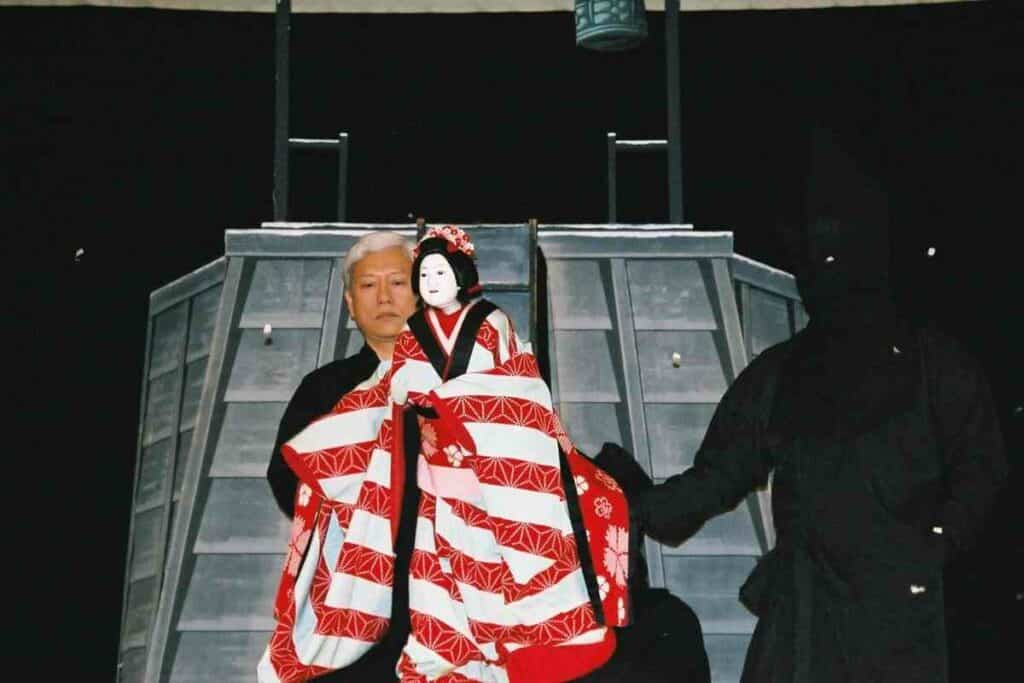
They are usually managed by three puppeteers who move the various parts of the puppets including:
- the limbs
- mouth
- eyes
- eyelids
- and eyebrows
The operators are dressed in black but are otherwise visible to the audience.
In contrast, the Bunraku puppets are intricately hand-painted in bright colours and complex designs.
Bunraku puppets are used to act out a dramatic live performance that is often chanted and accompanied by a small lute-like instrument called a samisen.
One person voices all the puppets and therefore needs to have a range of expressions and ‘voices’ fitting to all ages and both sexes. The stories often include tragic tales or love stories.
Take a look – 9 Japanese String Instruments
4. Gosho Dolls
For around 400 years, these plump white dolls with big, rounded heads are rather like simplified cute babies.
The style of these dolls is distinctive and rather disconcerting, fusing adolescent looks with adult-like faces reminiscent of theatre masks.
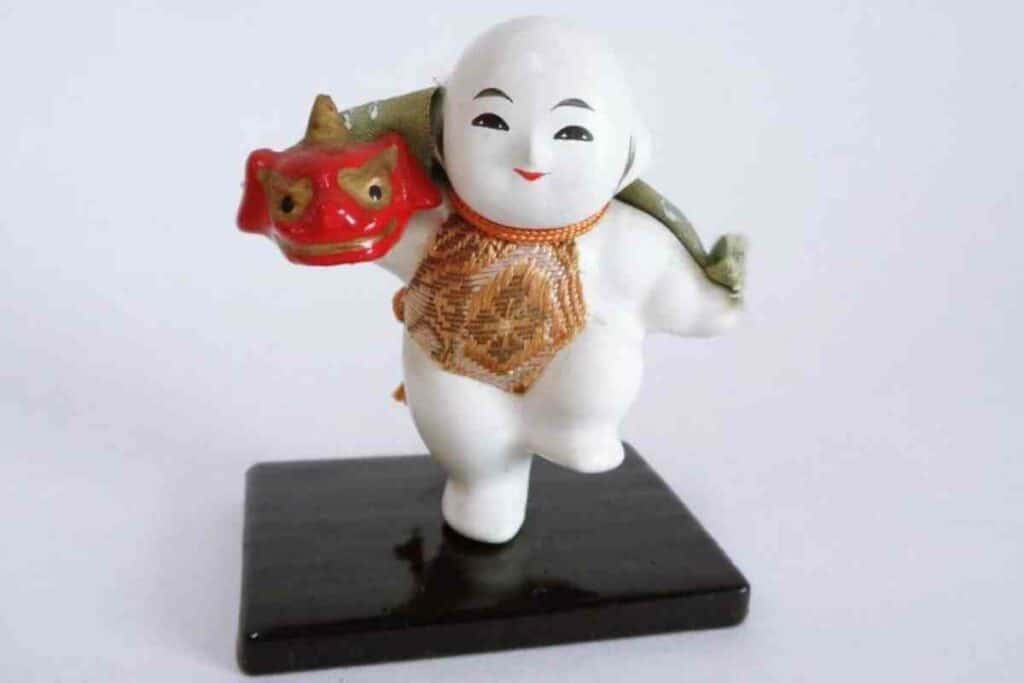
The cherubic dolls are said to bring good luck and are often almost naked other than carrying colourful objects or garments.
The objects carried by the doll also have meanings behind them such as fortune, delight, joy or veneration.
These Japanese dolls first appeared in Kyoto and soon became a typical court gift for visiting diplomats on behalf of the Imperial Household.
They were also taken back to feudal lords as souvenirs by court messengers.
5. Kokeshi Dolls
Perhaps one of the more famous types of Japanese doll in the Western world is the Kokeshi doll.
These simple wooden dolls are painted in beautiful designs and make a popular souvenir or collector’s item.
Often decorated in a minimalist design in simple colours, these dolls are rather like peg dolls in that they do not have arms or legs.
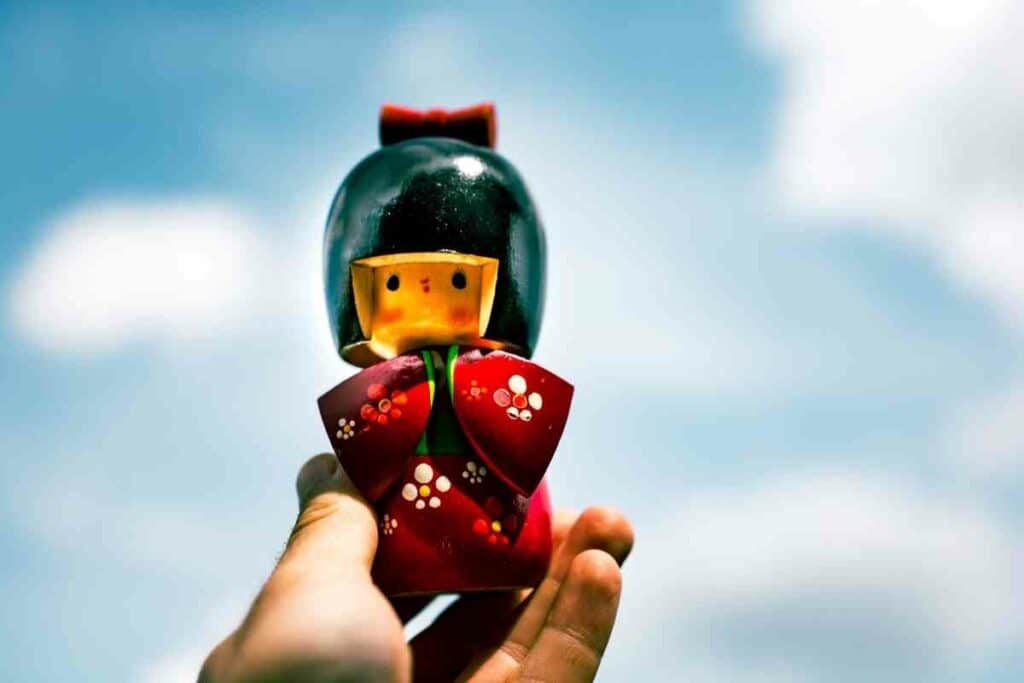
Kokeshi dolls allegedly originated from the late Edo Period (between 1603 and 1868). Their origins can be traced to traditional Japanese woodworkers called kijishi.
The woodworkers would fashion plates and bowls out of wood using a lathe and with any left-over wood, they would make simple toys.
The first Kokeshi dolls were made in this way and soon caught the eye of travellers vising hot springs near where the woodworkers were located.
They quickly because souvenirs and their popularity spread across the country.
Understatedly simple, these Japanese dolls are still popular today and have stood the test of time due to their durable shape and minimalist beauty.
They were even the inspiration behind Nintendo’s Miis – the digital avatars!
6. Kimekomi Dolls
Another kind of wooden doll, Kimekomi dolls also stem from Kyoto sometime in the 18th century.
The carving of these Japanese dolls is complex in that the woodworker carves creases in which fabric is inserted.
The fabric makes for a beautiful addition and gives the dolls an unrivalled traditionality which is accompanied by delicate and elegant facial features.
This contrasts with the rounded features of other Japanese dolls such as Kyoto and Gosho dolls.
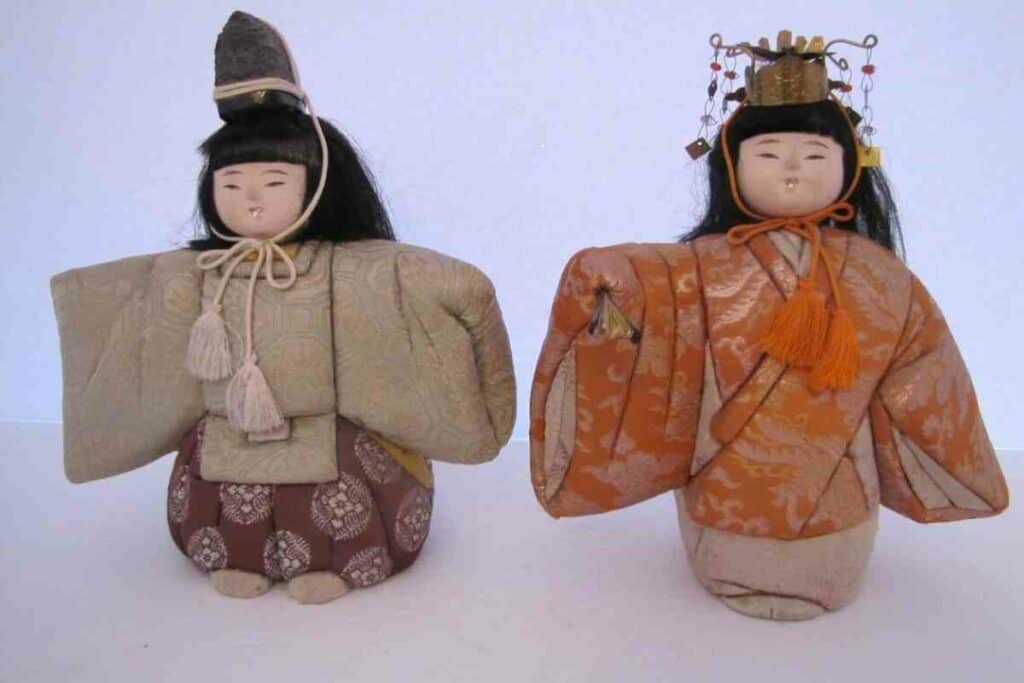
Until the late 19th century, the dolls were always sculpted out of wood.
However, later into the Meiji period (1868-1912), the dolls began to be moulded out of clay and mass production became possible.
The Japanese Ministry of Economy, Trade and Industry (METI) also designated the dolls as a traditional craft in 1978.
Kimekomi dolls are thought to be more decorative than symbolic and, today, are largely found in craft workshops and gift shops throughout Japan.
7. Karakuri Dolls
Karakuri dolls are unlike many other Japanese dolls because they are mechanical.
In fact, karakuri actually means ‘trick’ in Japanese, suggesting that they have hidden secrets or talents, which is where the secret mechanisms come in.
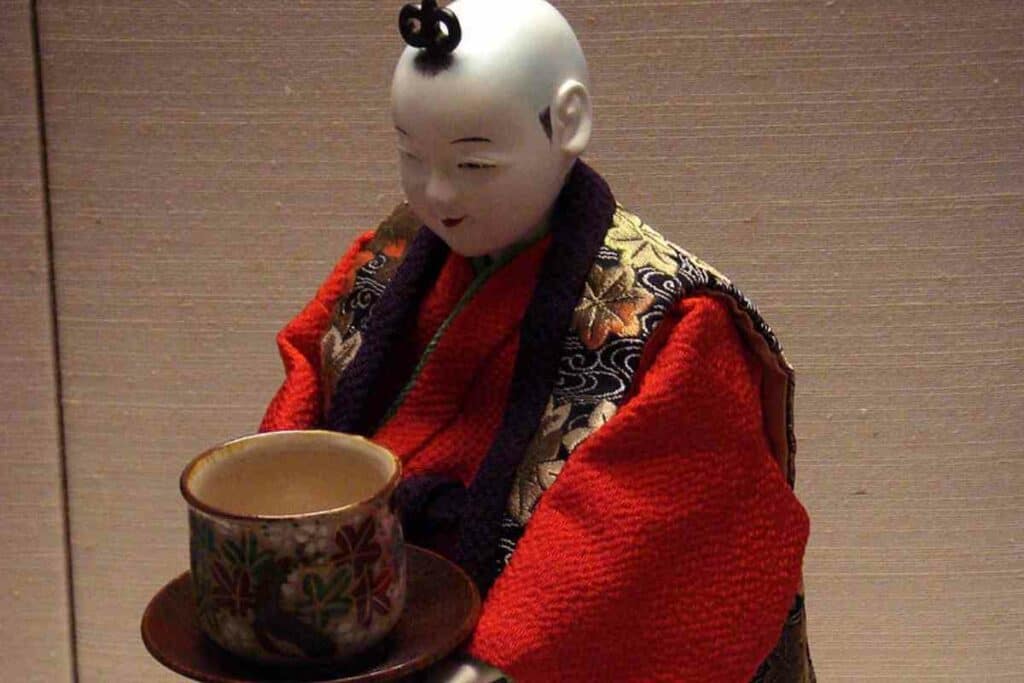
When you first come across a karakuri doll you’d think it was simply a decorative doll. However, looking more closely, you’d be able to find the mechanisms to make the doll move.
Despite having mechanisms such as hidden cogs, levers and springs, they’re not a recent creation. They date as far back as the 1600s!
The dolls’ mechanisms are careful and precise meaning they can perform many different movements including dancing.
You may find a doll that’s holding a tea bowl in front of herself which, when activated, moves toward her mouth. Most karakuri dolls perform more cursory tasks rather than elaborate ones.
8. Gogatsu Dolls
The Gogatsu dolls have some similarities with Hina dolls in that they’re brought out for certain festivities – this time for Boys’ Day, Tango-no-Sekku, which is held annually on 5th May.
Families with sons display their Gogatsu doll for the occasion.
Gogatsu means ‘warrior’ and these dolls are kitted out with a helmet, sword or bow and arrow, and samurai armour.
The festival is nothing new. Indeed, reports say it has been celebrated for over 1,200 years and began with offerings to ward off unwanted spirits, it eventually became Boys’ Day.
During the Festival – Communities come together to pray for their boys’ success in future battles. Today, this is more likely to refer to general fortune and success rather than warfare.
9. Okogari Koboshi Dolls
Traditionally a children’s toy, these dolls are rather like Weebles – a roly-poly toy popular in the UK in the 1970s and 1980s.
Traditionally made from papier mâché with a weight inside, they can be pushed over but will always stand themselves back up. In fact, okogari means “to get up” in Japanese.
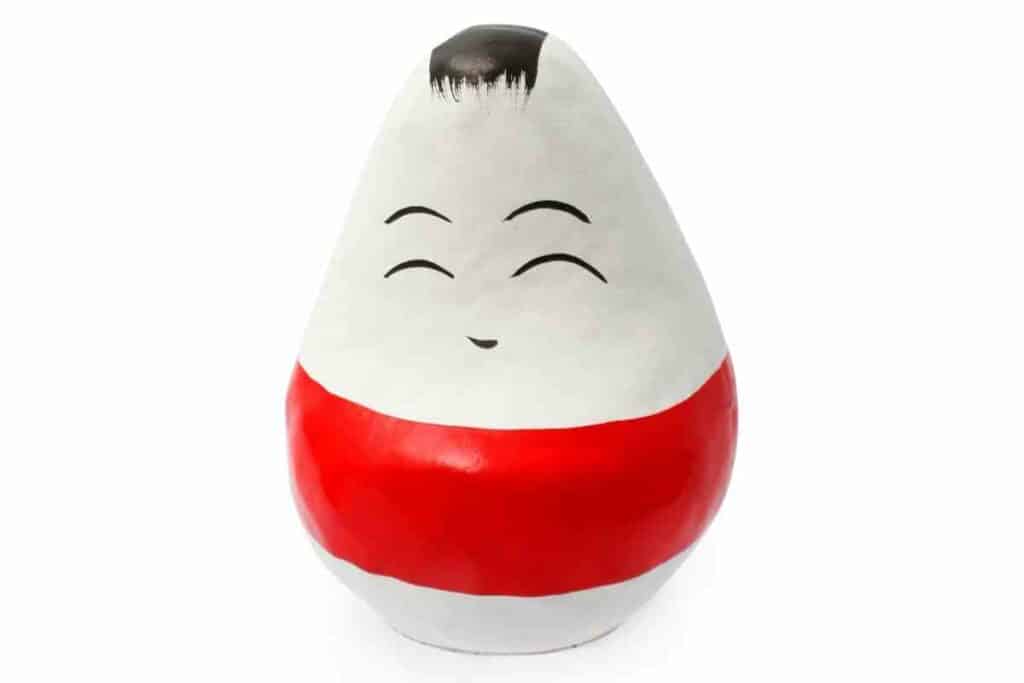
Dating back to the 14th century, these dolls are said to bring good luck.
It’s not uncommon for those buying them to knock a few of them over and buy the one that rights itself the quickest as it supposedly will bring more luck.
They’re also often sold as souvenirs and are a reminder of being resilient when times are tough.
10. Iki Ningyo Dolls
These dolls are life-like in comparison with other types of Japanese dolls.
Their name means “living dolls.” Extra care and attention to detail are given to their facial expressions and features.
Traditionally, travelling performers would use these life-size dolls and audiences would pay to see them on display as centrepieces at exhibitions for example.
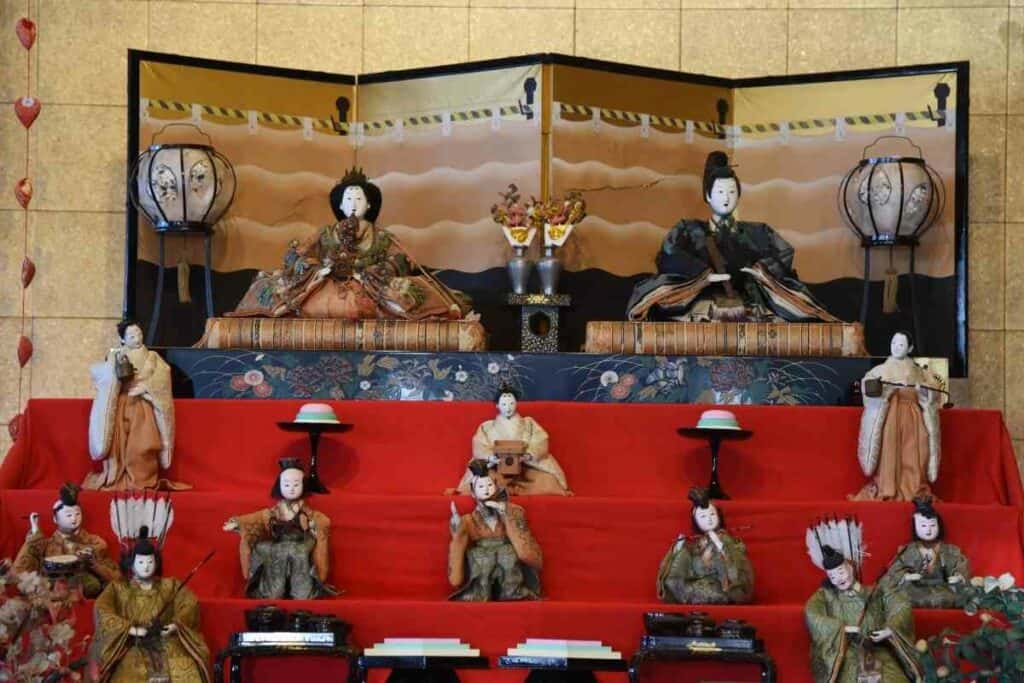
Some upper-class citizens would also start their own collections of them too.
The dolls’ heads were typically made of wood before being covered in a paste made from crushed shells.
The eyes were made from polished glass to make them look more realistic and teeth were made from ivory (though these days, this is often substituted for bone).
Even the hair is real human hair or sometimes animal fur – that includes the eyelashes too!
11. Kyoto Dolls
These Japanese dolls were designed to be more decorative and sophisticated as part of Japanese culture.
Kyoto dolls, sometimes called Kyo Ningyo, are made using traditional Japanese techniques passed through the generations.
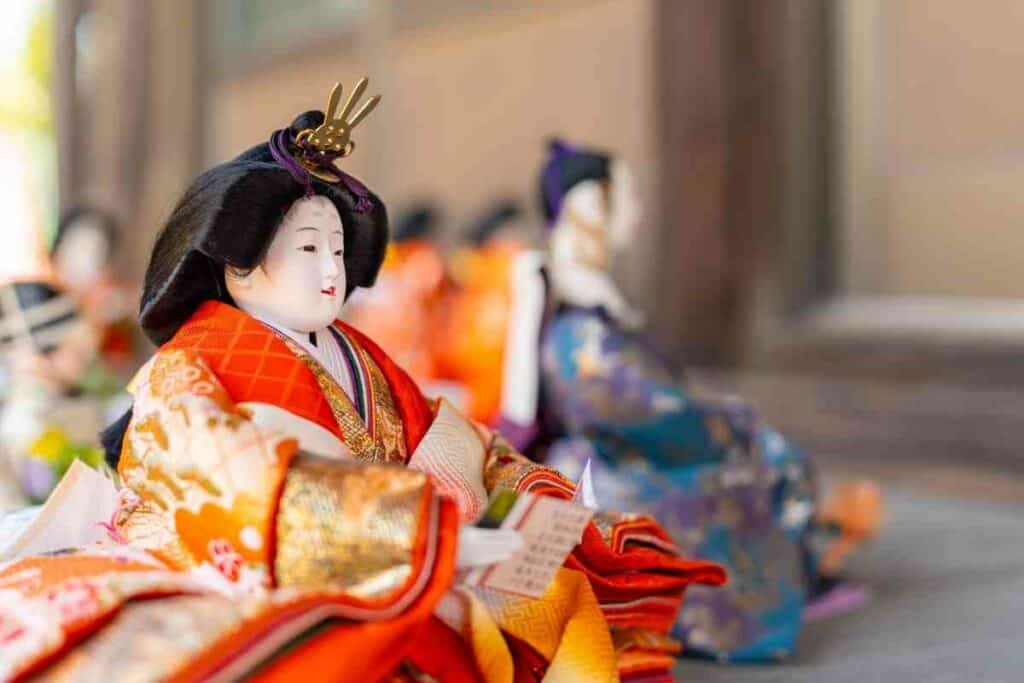
These dolls are often made in collaboration, with one expert responsible for a different part of the doll.
For example, you may get a Kyoto doll limb expert, one for hair and the head and another may create the clothing.
As You Would Expect – These dolls are often some of the more expensive Japanese dolls.
It’s not only the skills of the artisans that are passed down through the generations, but the dolls are too!
Many of them become family heirlooms.
12. Hakata Dolls
Originating from the Japanese city of Hakata, these dolls are made from unglazed clay in a traditional Japanese technique.
Hakata dolls are beautiful and delicate, with many featuring women with captivating realistic expressions and intricate kimonos.
There are other varieties too such as children and those featuring Fukusuke, a large-headed man kneeling in a seiza position.
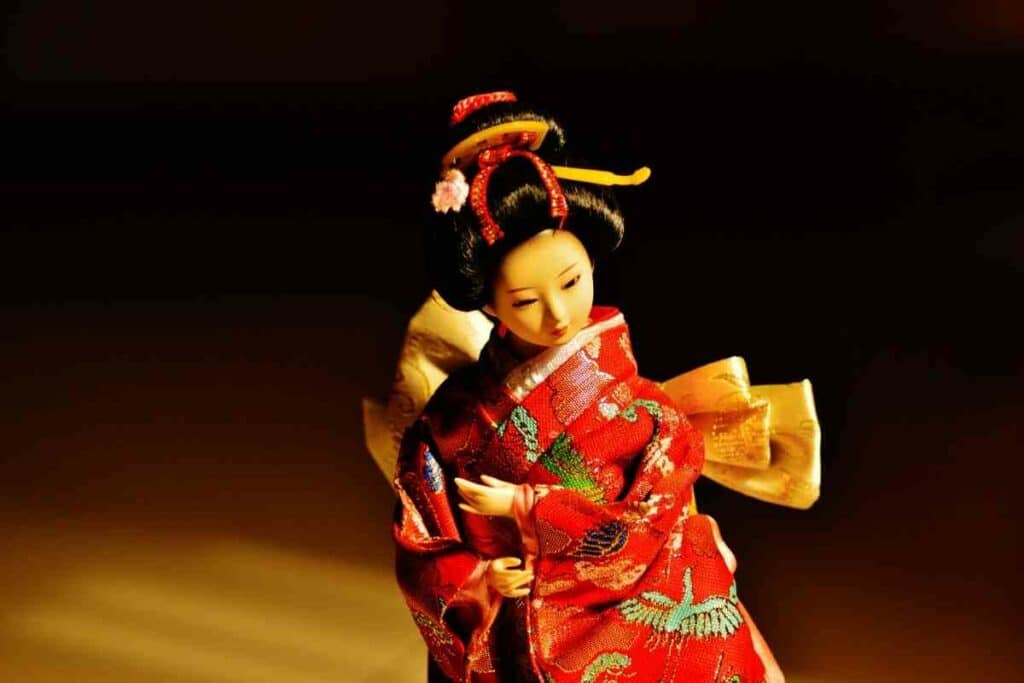
The latter, along with its female counterpart Fukujo, is said to bring good luck.
The sculpturing of these dolls differs from the most common moulding techniques of other Japanese dolls in that it is a two-part process, in which the doll’s finer parts such as the fingers and hands are moulded separately.
The mould is created in plaster first and then filled with the clay.
After being biscuit-fired, the doll is painted using a special whitewash powder called gofun, which is made from seashells.
Other specialist paints are also used, such as natural pigments from minerals and distemper, a powder paint that has been mixed with gofun.
Today, no short-cuts are made, and these figures are still crafted by hand.
Final Thoughts on Types of Japanese Dolls You Should Know
From the wooden to the clay, the intricate and delicate to the roly-poly, there are so many types of Japanese dolls out there that there’s certainly one that will appeal to anyone’s taste.
Many are said to bring luck whilst others bring amusement and entertainment.
Whether they’re decorative or for playing with, they make fantastic souvenirs or gifts when visiting Japan.
Also Read
- The Forbidden Japanese Island That Will Give You Nightmares
- Miss Japan Forced to Wear Sailor Moon Costume Since Childhood: Claims It’s the Secret to Her Success
- Essential Guide to Japan VPN: Secure Access and Privacy for Travelers
- Sumo Wrestler Suit for Adults by TOLOCO: Best Sumo Suit?
- Eki Stamp Book (Gotta Collect Them All!)
- Explore the Fascinating World of Japanese Rubik’s Cubes




